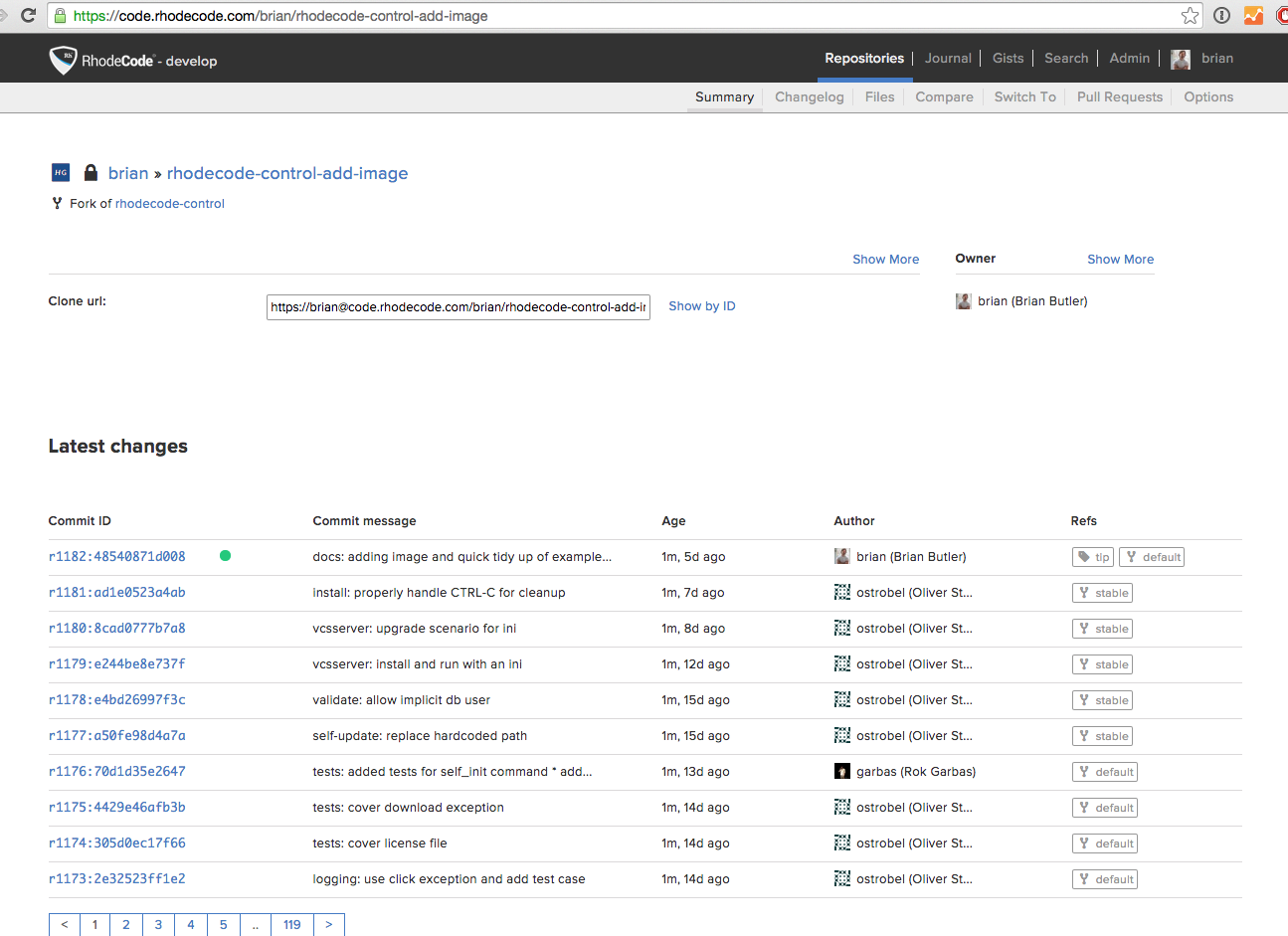API Example Usage
Use the following example uses of the |RCE| API to carry out work on your instances, or |repo| maintanence on the server. For the complete API documentation, see the :ref:`api` section.
Stripping Commits
The strip command is useful for removing commits on the server, allowing you to push changes without using force. To strip commits on the server, use the following steps:
- Install |RCT|, as explained in the :ref:`install-tools` section.
- Configure the :file:`~/.rhoderc` file with the API connection details, as explained in the :ref:`config-rhoderc` section.
- Check the |RCE| changelog and see from which revision onwards you wish to strip commits. This will also strip all descendants.

- Enter your |RCT| virtual environment, using the following example:
$ . venv/bin/activate (venv)$
- Use the API to strip a commit, or number of commits from a |repo|. In this example I am stripping the top two commits from ad1e0523a4ab onwards.
Note
Repositories in |repo| groups require the |repo| group to be passed as part of the repoid.
# Run the Strip API call $ rhodecode-api --instance-name=instance-id strip \ repoid:repo-group/repo-name revision:ad1e0523a4ab branch:stable # Check the JSON-RPC verification
{ "error": null, "id": 5960, "result": { "msg": "Stripped commit ad1e0523a4ab from repo `repo-group/repo-name`", "repository": "repo-group/repo-name" } }
- Once the commits are stripped, you can verify that they are stripped on the web interface.

